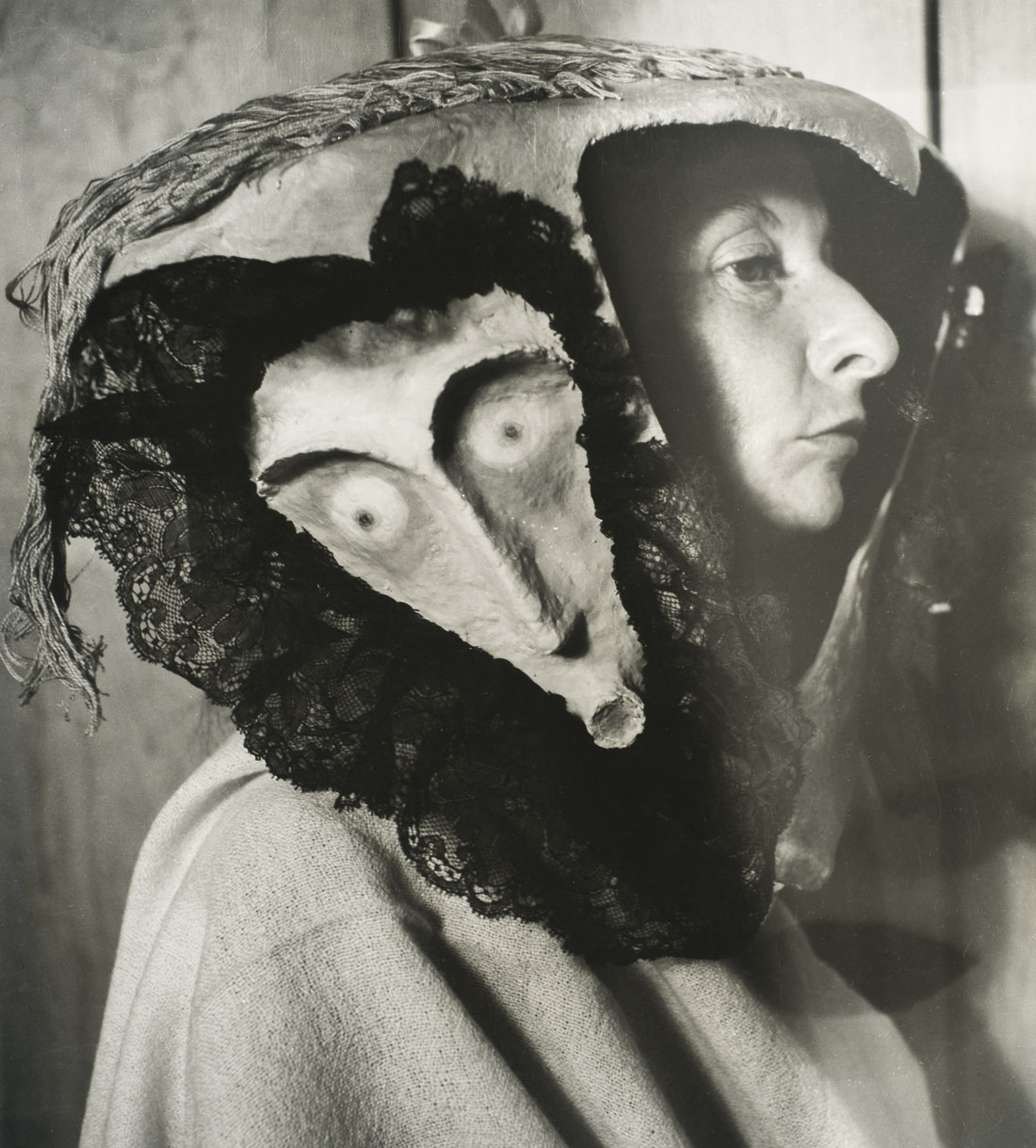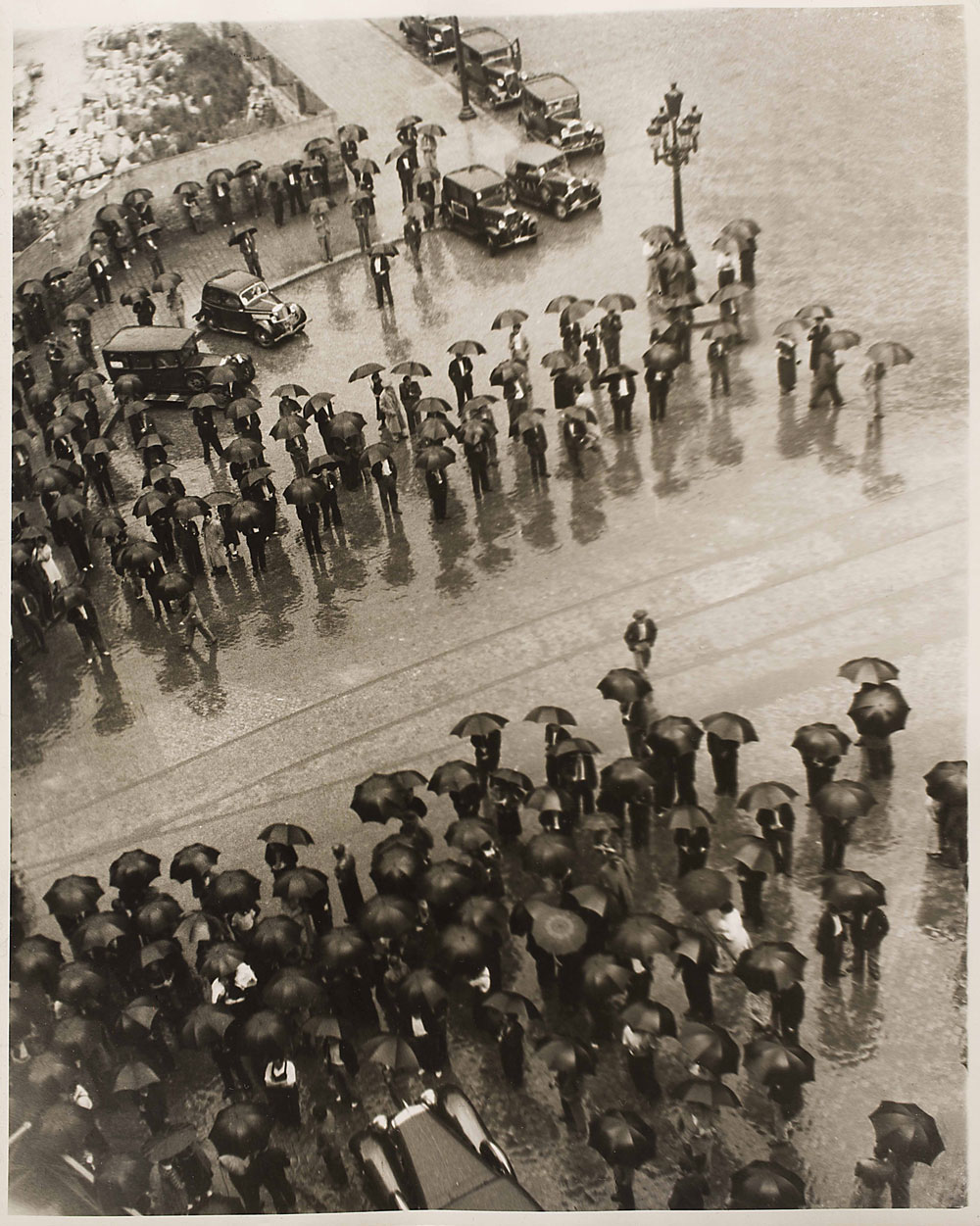Kati Horna was born Katalin Deutsch in 1912. She worked in her native Hungary, France, Spain and Mexico. She was a refugee, part of a generation of Hungarian photographers forced to flee their country in the 1930s.“I fled Hungary, I fled Berlin, I fled Paris, and I left everything behind in Barcelona… It’s for vagabonds like me. Because my clothes got torn on the route, I selected photography.”
– Kati Horna
Fellow artists who fell foul of Nazis and their views on “degenerate art” and hatred of Jews included André Kertész, Horna’s childhood friend Robert Capa, Eva Besnyö, László Moholy-Nagy, Nicolás Muller, Brassaï, Rogi André, Ergy Landau and Martin Munkácsi.
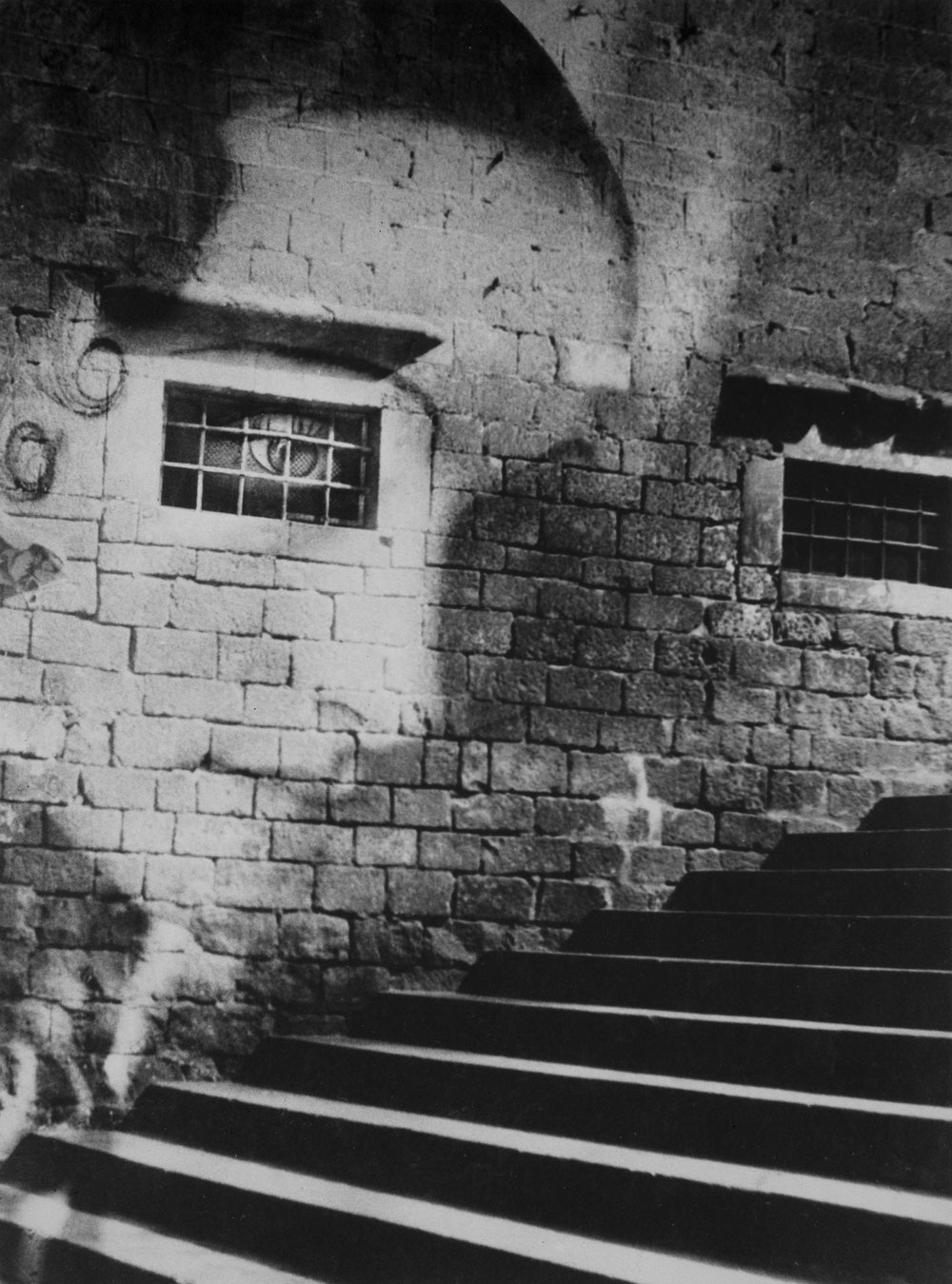
Ascending to the Cathedral, Barcelona, 1938
In March 1933, when the National Socialist Party came to power, Horna fled to Paris, where she was reunited with Capa. Armed with a 6×6 Rolleiflex, she became a street photographer, recording life in Paris flea markets and cafés for the agency Lutetia-Press.
Her eye often fell on things that didn’t quite fit, like fractured dolls and masks. Artist Saul Steinberg, a fellow Jewish artist forced to flee Nazi Europe, shared an interest in masks. “The personal remark, the visible emotion, has no place in society,” he said. “Of course [a mask is] something that’s useful, it’s necessary, but it’s also something ugly, because it takes away all the poetry, the spontaneity of life away from people. The more organised society, the more we have these masks.”
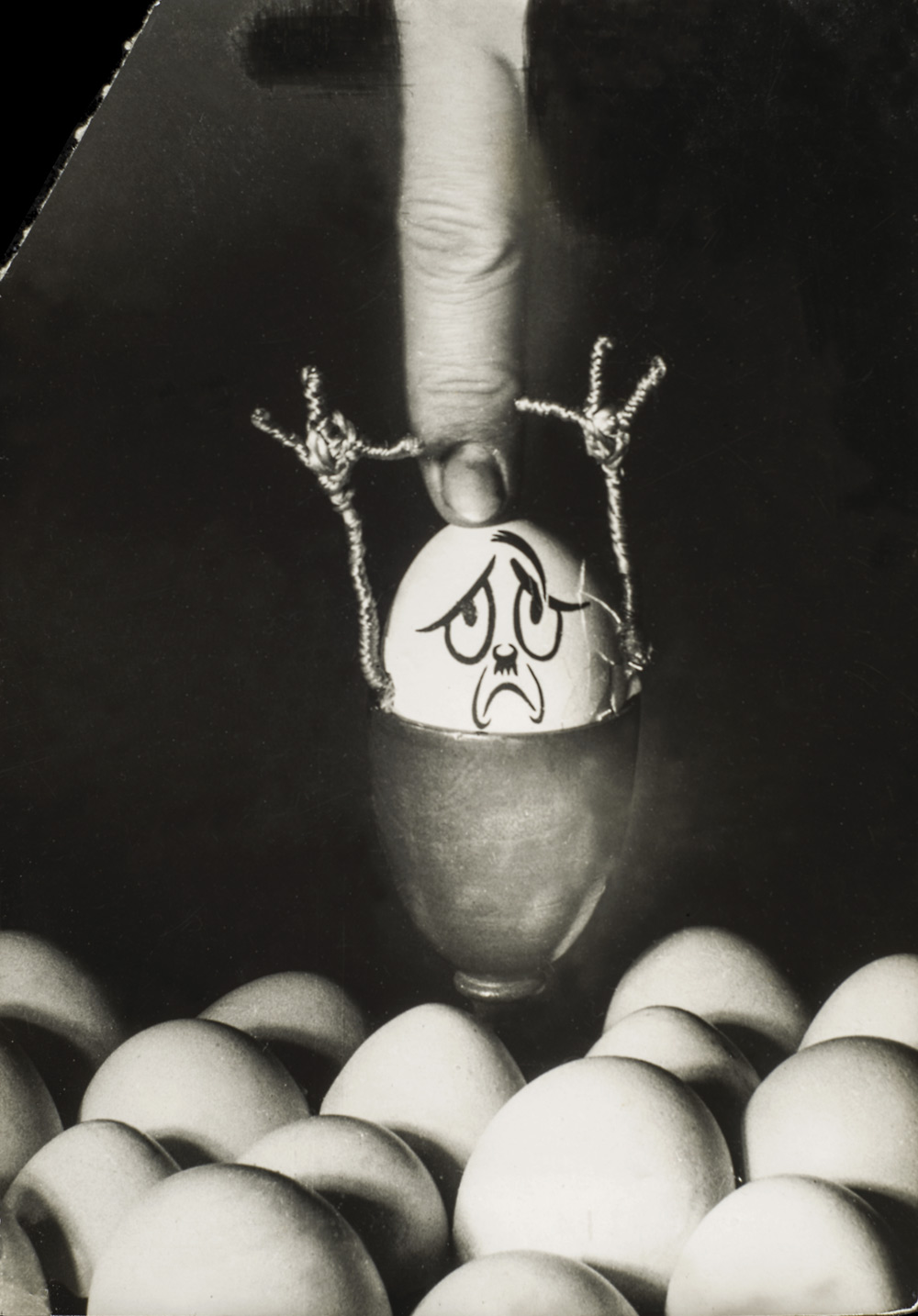
Kati Horna Paris, 1937 – From the Hitler series
Horna photographed the Spanish Civil War (1936-1939), at the request of the Spanish Republican government between 1937 and 1939, working alongside Gerda Taro and Capa. She photographed at the Aragon front, Valencia, Barcelona, Madrid and a number of provincial villages. Her work was published in the Spanish anarchist magazines Umbral (where she met her future husband, Jose Horna), Tierra y Libertad, Libre-Studio, Tiempo Nuevos and Mujeres Libres.
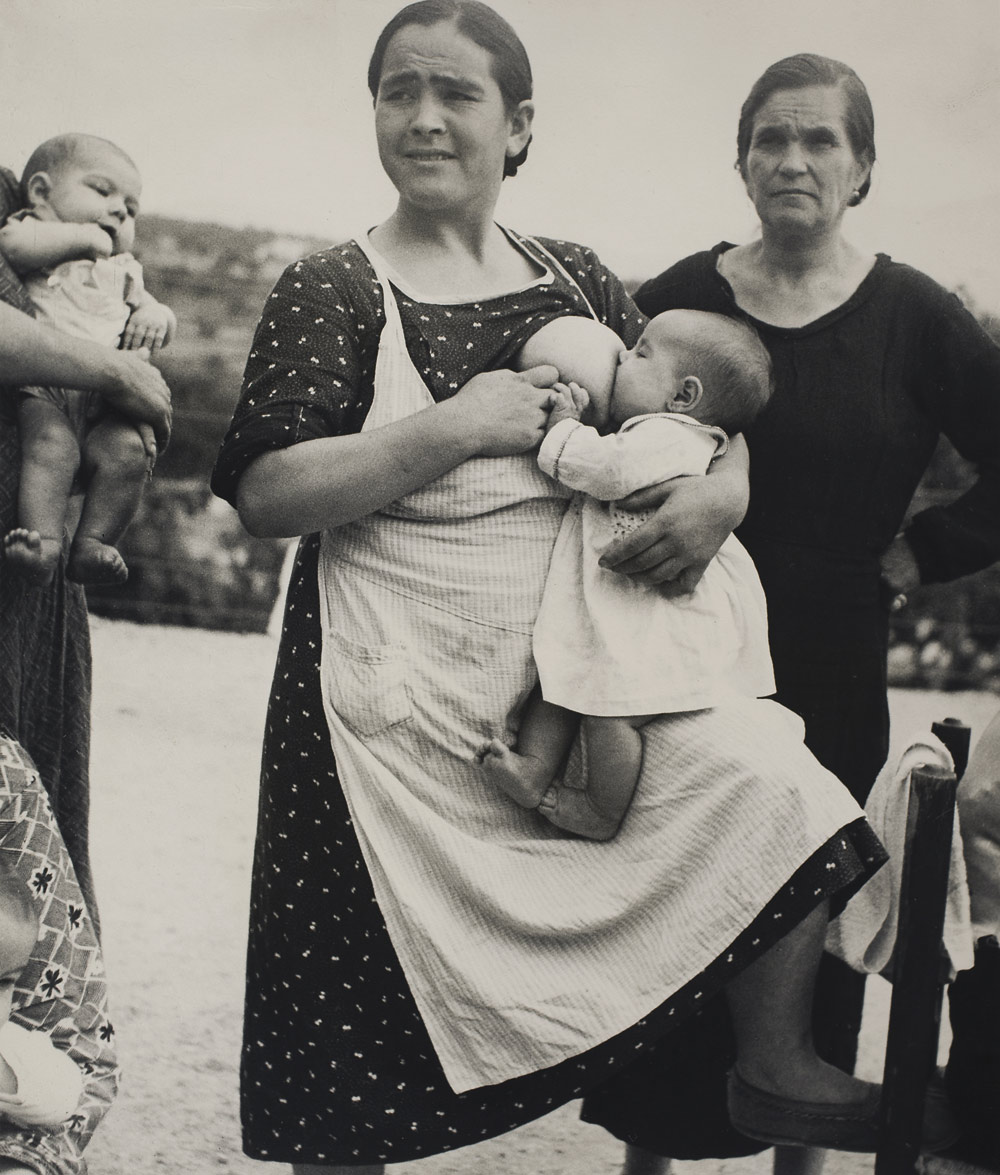
Kati Horna : Vélez Rubio, Almeria province, Andalusia, Spanish Civil War, 1937
“Photography, with its various possibilities, allows you to liberate and develop your own sensibility and express it in graphic images.”
– Kati Horna
.“The camera is not an impediment. It is oneself!”
– Kati Horna

Kati Horna : Robert Capa in the Studio of József Pécsi, Budapest, 1933
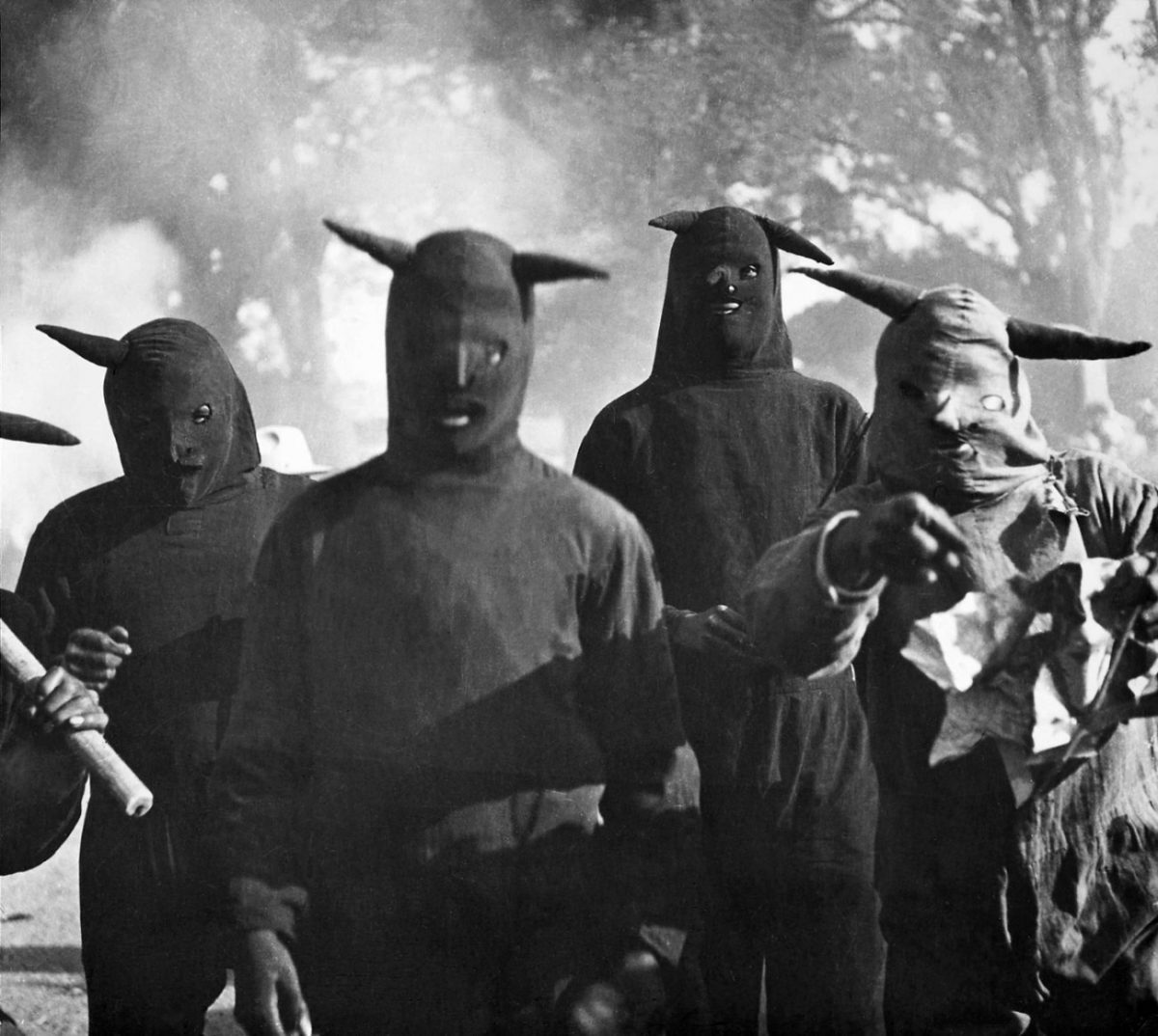
Carnaval de Huejotzingo, Puebla, 1941

Woman with Mask, Mexico, 1963
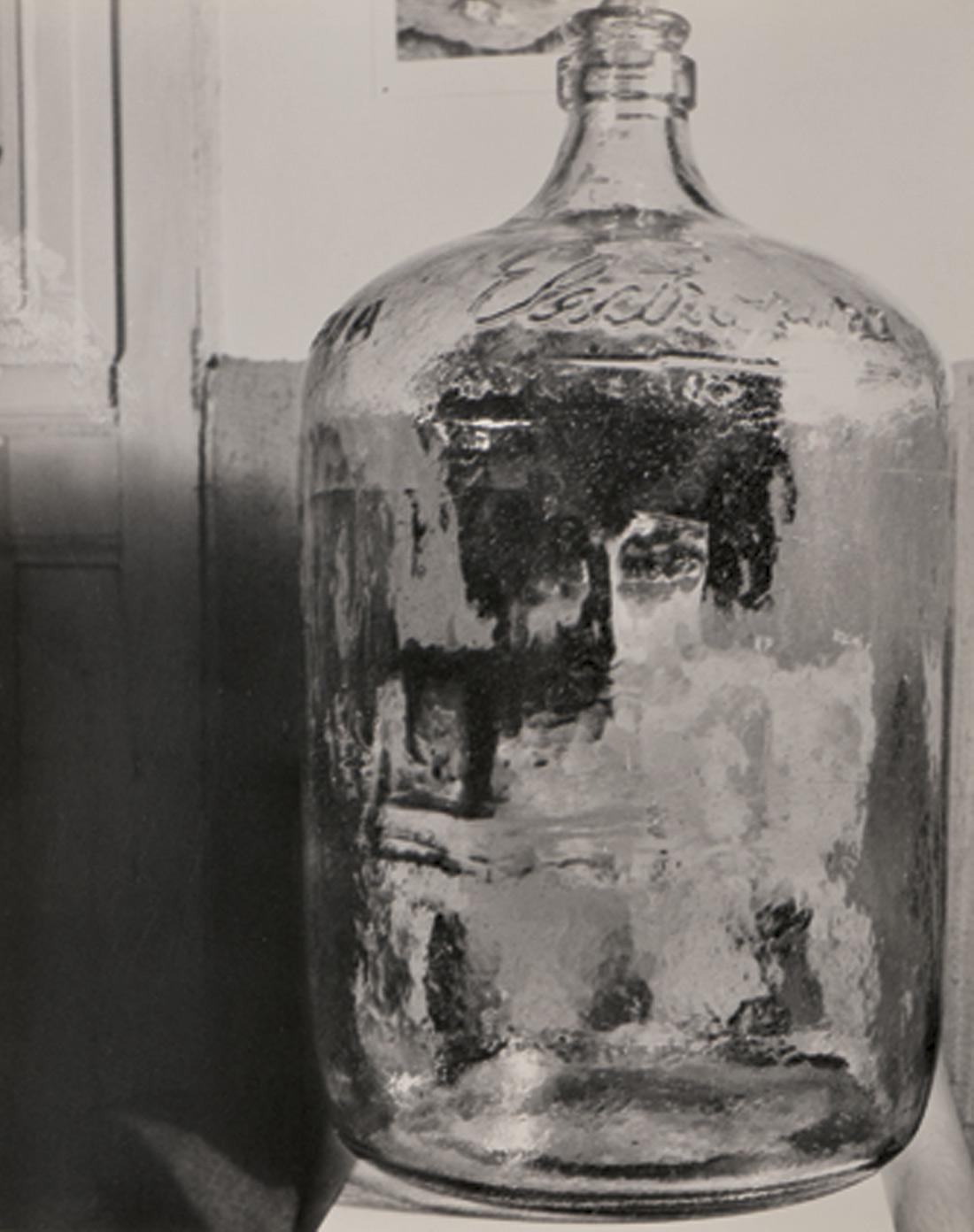
The Bottle, Mexico, 1962
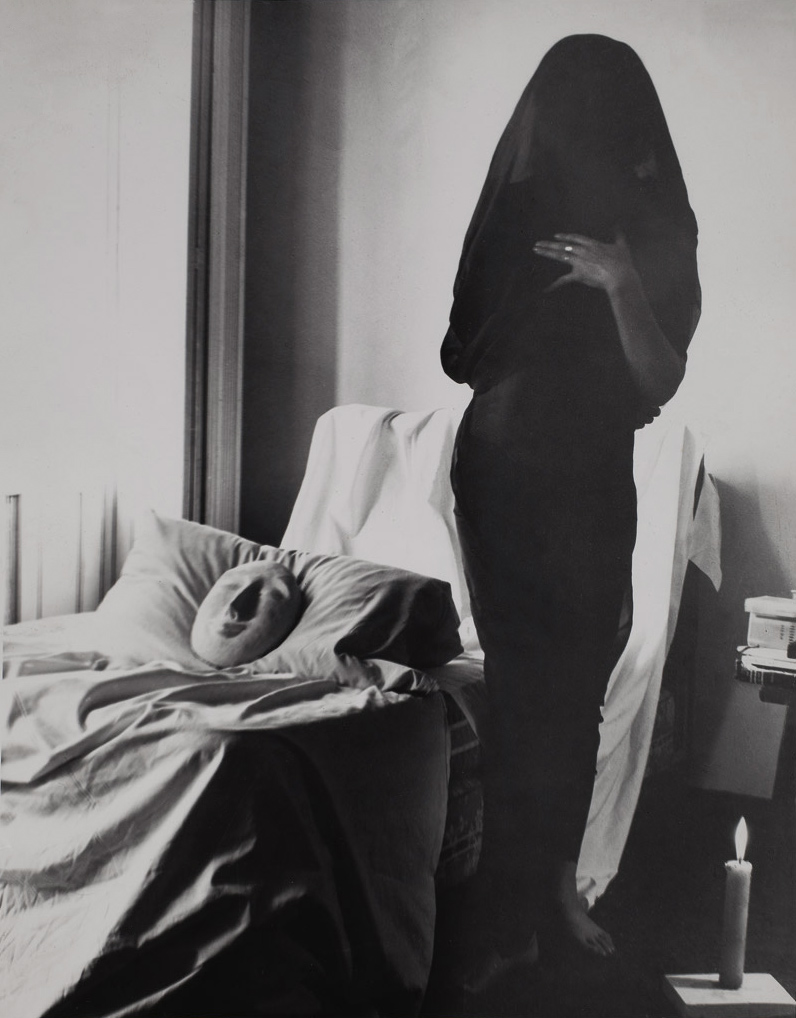
Mexico, 1962 – Ode to Necrophilia

La Castañeda psychiatric hospital, Mixcoac, Mexico, 1944
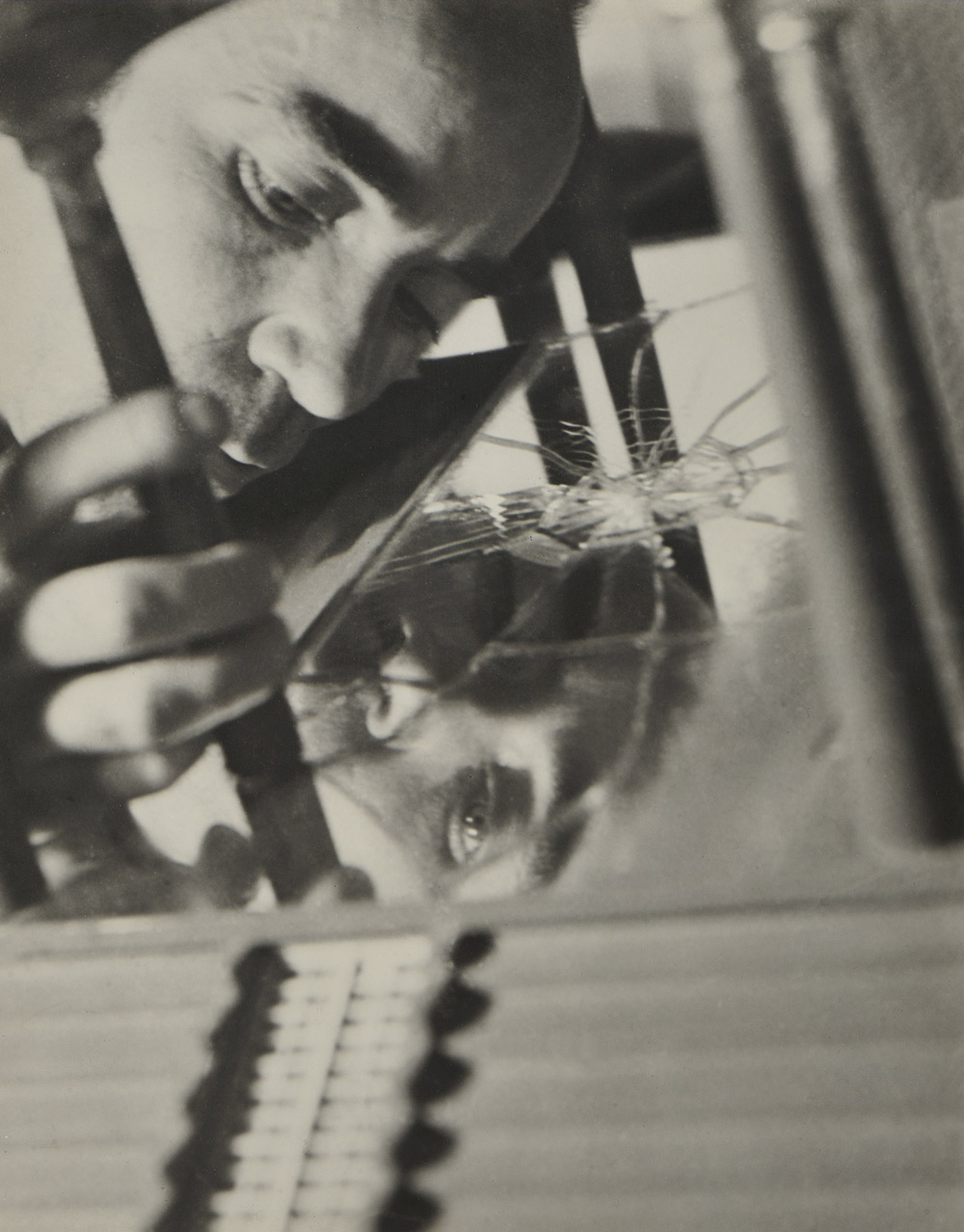
José Horna Working on the Maquette for Edward James’s House, Mexico, 1960

Robert Capa by Kati Horna – Budapest, 1933
First publish in 2014. The exhibition at Jeu de Paume
Would you like to support Flashbak?
Please consider making a donation to our site. We don't want to rely on ads to bring you the best of visual culture. You can also support us by signing up to our Mailing List. And you can also follow us on Facebook, Instagram and Twitter. For great art and culture delivered to your door, visit our shop.


